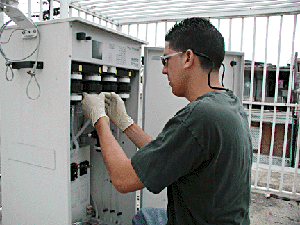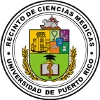
The Center for Environmental Toxicology Research, funded by Environmental Protection Agency (EPA)-EPSCoR and initiated in 1994, investigates the effects of pollutants in specific areas of environmental concern in Puerto Rico. The Center, headquartered at the UPR Medical Sciences Campus, provides the infrastructure to support interdisciplinary research among 12 scientists and 27 graduate students from various campuses of the UPR system.
 Research efforts are concentrated into five major core areas: (1) toxicological evaluation and chemical composition of PM10 and PM2.5 urban particulate matter (SEER1); (2) development of peptide nucleic acid biosensors for the detection of waterborne pathogens (SEER2); (3) biodegradation of biopolymer-starch formulations by genetically engineered microorganisms (SEER3). ; (4) toxicological evaluation of the effect PM10 and PM2.5 urban particulate to bronchial epithelial cell and its relation to pulmunary diseases and the immune system; (4) toxicological evaluation of the effect steroids to the MHC-II expression in hepatocytes and non-Antigen Presenting Cells.
Research efforts are concentrated into five major core areas: (1) toxicological evaluation and chemical composition of PM10 and PM2.5 urban particulate matter (SEER1); (2) development of peptide nucleic acid biosensors for the detection of waterborne pathogens (SEER2); (3) biodegradation of biopolymer-starch formulations by genetically engineered microorganisms (SEER3). ; (4) toxicological evaluation of the effect PM10 and PM2.5 urban particulate to bronchial epithelial cell and its relation to pulmunary diseases and the immune system; (4) toxicological evaluation of the effect steroids to the MHC-II expression in hepatocytes and non-Antigen Presenting Cells.
Two research projects had investigated metropolitan air pollution problems and aquatic pollution in one of the largest estuaries on the island, the San José Lagoon.
The Environment Quality Board and the Puerto Rico Department of Natural Resources collaborate with the Center by supplying air filters with atmospheric particulate matter for air pollution studies and providing transportation and logistics for sediment and biological sampling in the San José Lagoon.
David Acevedo, a graduate student with Dr. Braulio Jiménez, taking samples of particulate material <2.5 um at the Sampling Station at Amelia, Guaynabo.
